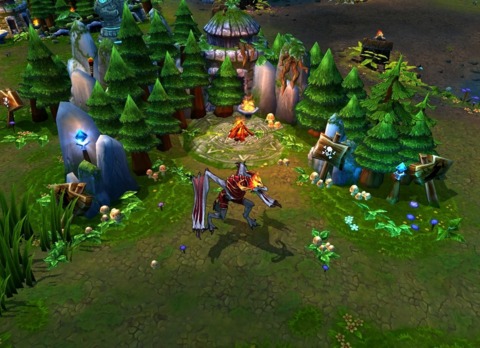The Return of Arcades
They may be gone in the physical sense, but their cutthroat business model lives on.
For the last couple of years, social and free-to-play has been the Next Big Thing. It's the land of opportunity that everyone at GDC Online was talking about last month (and for that matter, last year). It's Zynga. It's iOS. It's smartphones and tablets. It's, "Hey, let's sell people a $2 game with 90 percent of the content locked away so that we can sell each character or feature at $1 or $2 a pop." It's the compelling gameplay concept of "gotta catch 'em all" taken to its logical conclusion. It's the realization that 1 percent of your customers are self-destructively compulsive enough to spend hundreds or thousands of dollars on your product, so why not stick them for every dime you can get? And if your Ahab-esque pursuit of these "whales" alienates the millions of gamers you used to call your customer base, then, "F*** 'em," because they were only willing to spend $60 on your game anyway.

I'm not saying that League of Legends isn't a good game. I'm not saying that The Sims Social isn't fun. I'm not even saying that traditional games like Pokemon or Uncharted 3 are inherently any better. I'm just saying that free-to-play games and their ilk are designed according to the limitations of their business model.
In the traditional packaged goods model, designers have room to experiment with their games. They can create compulsion loops and encourage repeated play and do everything that free-to-play games do. They can also educate, inspire, and touch people in a way that's difficult to do when you need to keep asking someone to fork over more money for your content.
It would be easy to dismiss free-to-play games as a calculated, cynical perversion of an artistic medium, turning it into little more than a slot machine with pretty lights and noises fundamentally designed to keep a vulnerable mark shoveling in money for rewards as fleeting as they are insubstantial. But it's an approach that dates back to some of gaming's earliest roots.
In some ways, free-to-play games are the new arcade, an idea that deeply saddens me considering my affinity for the doomed hangouts of my youth. Like free-to-play games, arcade machines were designed around a business model. If players weren't shoveling more quarters in every couple of minutes, the arcade game wasn't going to earn its money back. That's why the last level of every beat-'em-up turned into a button-mashing blur of health-depleting super moves, why Marble Madness could be finished in less than five minutes, and why Ghosts n' Goblins is unadulterated bulls***.
So as great as arcades were (in my opinion and my memory), I recognize that the added popularity and mainstream awareness they earned could further the medium only so much. But then came the NES and a wave of open-ended games with long-term progress like The Legend of Zelda and Metroid. These games could never work in arcades because the lack of time pressure and the player's ability to moderate difficulty by sticking to known easy areas run completely contradictory to the coin-op business model. (As an aside, bonus points and a hearty, derisive "shush" to everyone who's thinking of Nintendo's PlayChoice 10 system right now. Playing Metroid in three-minute increments for $.25 a pop is so far from feasible, I would argue it doesn't qualify as having "worked in arcades." And another shush to those who mentioned Adventure on the 2600, not because that point isn't valid, but because it throws a wrench in my narrative.)
It was the NES and the console market that allowed developers to explore different kinds of games. They could still make arcade-style games intended to be played in short bursts (Track & Field II), as well as titles that were excruciatingly difficult (Silver Surfer), but they could also make role-playing games like Final Fantasy, in-depth strategy games like Romance of the Three Kingdoms, and other meaty experiences that simply wouldn't lend themselves to a coin-op format.
Now we're looking at an industry where the packaged retail game model (you know, the thing that has driven industry sales since the days of the NES) is shrinking. And with the switch to digital distribution, retail sales aren't likely to pick up anytime soon. Publishers are tired of selling a game for $50 or $60 and calling it a job well done; they want to hook players for months at a time. They want to sell them another $60 in additional map packs (Call of Duty), with a $50 annual subscription (Call of Duty), $90 extra for a collector's edition (Call of Duty: Modern Warfare 2 and Black Ops), and another $15 in microtransactions thrown in for good measure (not Call of Duty yet, surprisingly).
And if you're an upstart developer with an idea for a game that just doesn't fit into that business model (like, say, Shadow of the Colossus), how are you going to convince a publisher to fund that project? It doesn't matter if your game is innovative or revolutionary; by virtue of your business model, you're a relic, a thing of the past, a vestige of a time gone by rather than a harbinger of the Next Big Thing that will drive quarterly growth and shareholder value.
Like the gamers themselves, the industry should be mindful that the costs of free-to-play can add up quickly when nobody's paying attention.
Got a news tip or want to contact us directly? Email news@gamespot.com

Join the conversation